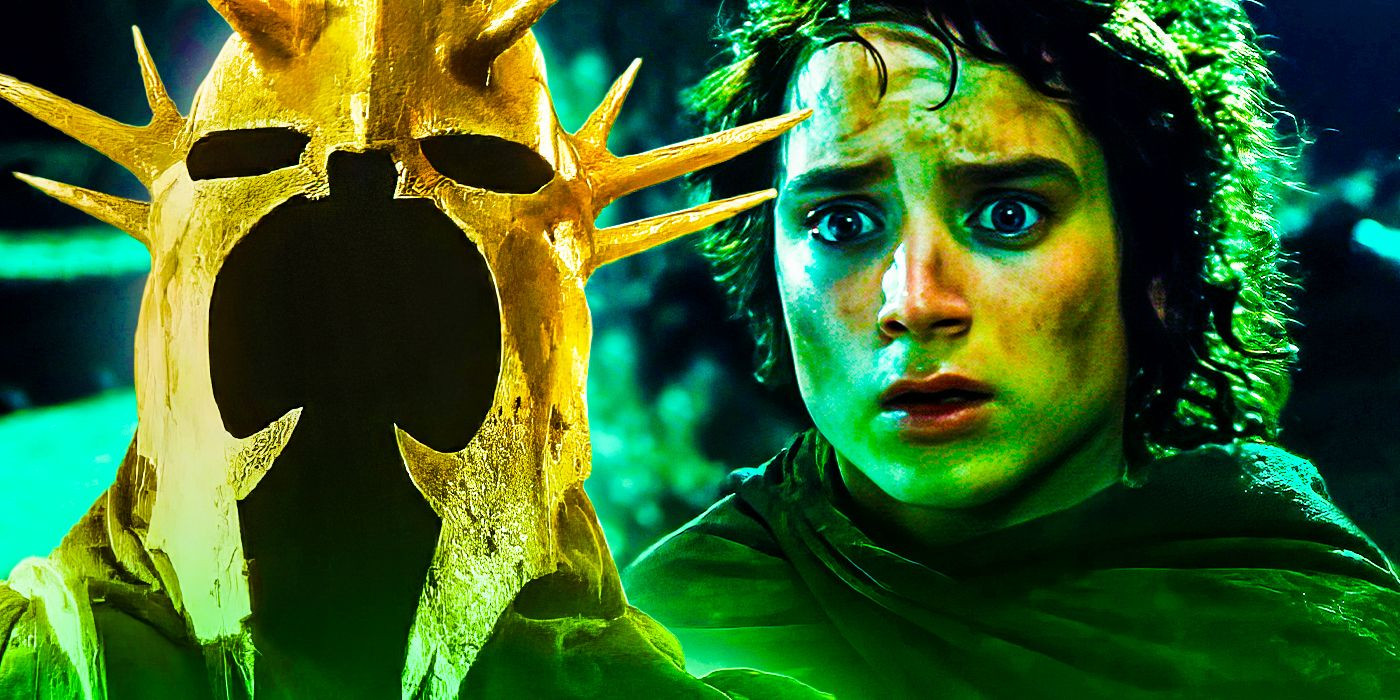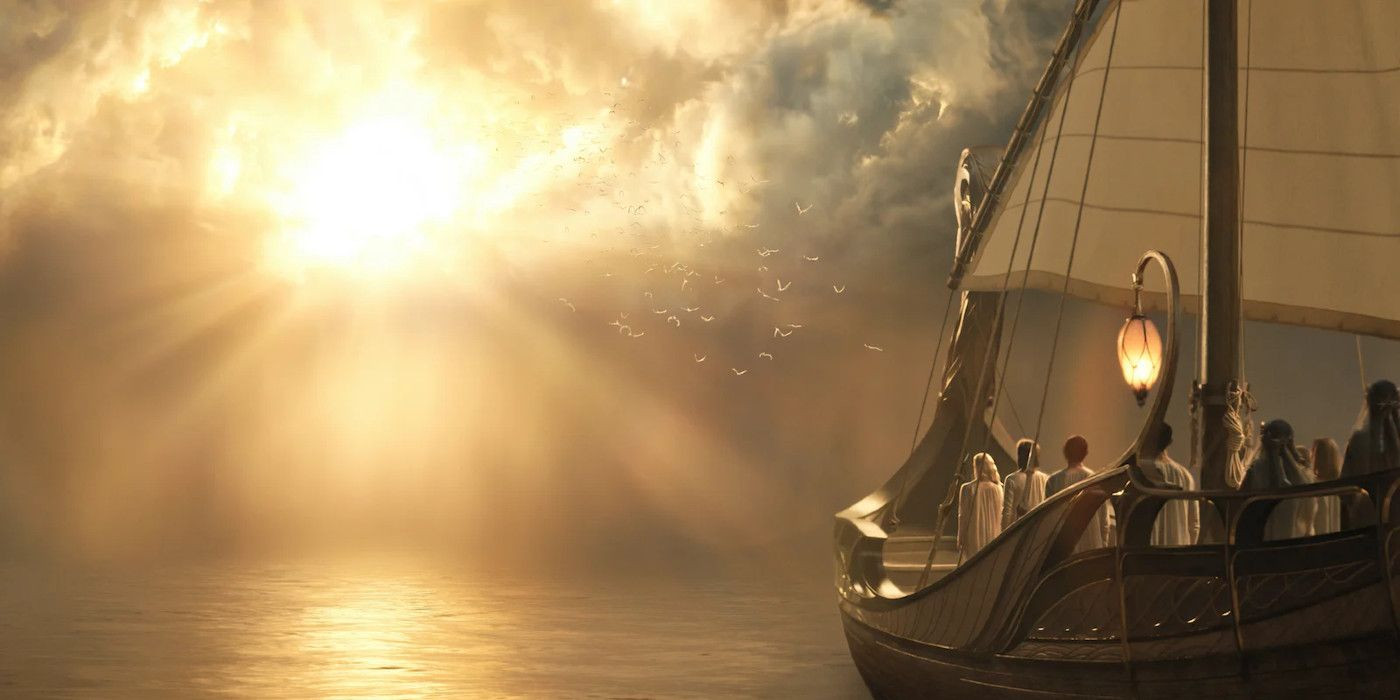At the conclusion of the epic Lord of the Rings trilogy, Frodo Baggins embarks on a journey unlike any other, sailing West to the Undying Lands. While many viewers and readers understand that the Elves invited Frodo due to his pivotal role in destroying the One Ring and defeating Sauron, the question remains: why did Frodo choose to leave Middle-earth permanently instead of returning to a peaceful life in the Shire? Although he initially rejoins his Hobbit companions in the Shire, Frodo’s stay is brief, culminating in a poignant farewell to Sam and the others. The enduring wounds, both visible and invisible, sustained during his arduous quest as the Ring-bearer ultimately compelled Frodo to seek solace beyond Middle-earth. However, the reasons for his departure delve deeper than mere physical ailments.
After a temporary return to the Shire, Frodo, accompanied by Gandalf and Bilbo, sets sail on an Elven ship towards the Undying Lands, also known as Valinor – a celestial realm situated beyond the known world of Middle-earth. Peter Jackson’s Lord of the Rings films offer a glimpse of this departure, but the underlying motivations are richer and more complex. Frodo’s exit from Middle-earth was not merely a desire for adventure, but a necessity for healing. The injuries he suffered from malevolent forces, such as the Witch-king’s Morgul blade, were beyond the scope of conventional healing in Middle-earth, yet not insurmountable in the blessed realm of the Undying Lands. Frodo’s unparalleled sacrifice, bearing the Ring and ensuring its destruction, earned him passage to this mythical land, a privilege also granted to Galadriel in The Rings of Power for her wisdom and leadership.
 Grima Wormtongue, Sam and Rosie Gamgee, and the Mouth of Sauron from Peter Jackson
Grima Wormtongue, Sam and Rosie Gamgee, and the Mouth of Sauron from Peter Jackson
The Undying Lands: A Haven for Frodo’s Lingering Wounds
Enduring Pain from the Witch-King and Shelob
Frodo’s journey was marked by severe physical trauma, leaving scars that ran deeper than the skin. In The Fellowship of the Ring, the Witch-king of Angmar, leader of the Ringwraiths, pierced Frodo with a Morgul blade on Weathertop. Later, in Return of the King, as Frodo and Sam bravely navigated the treacherous tunnels to Mordor, they encountered the monstrous spider Shelob. Despite their efforts to escape, Shelob gravely wounded Frodo, injecting him with her venomous stinger. While Frodo physically recovered enough to complete his mission of destroying the One Ring, the insidious effects of these dark wounds were far from superficial.
Much like the spectral wound inflicted by the Ringwraith’s blade, the poison from Shelob’s stinger left lasting internal injuries. Each year, on the anniversary of his wounding at Weathertop, Frodo would relive the agonizing pain of the Morgul blade. A similar torment would revisit him on the anniversary of his encounter with Shelob. These weren’t mere memories; the physical pain returned with vivid intensity. For Frodo, the only path to true and lasting peace lay in departing Middle-earth and seeking the restorative grace of the Undying Lands, hoping to finally mend his tormented body and spirit.
 Why LOTR Ringwraiths Don
Why LOTR Ringwraiths Don
Frodo’s Trauma: A Reflection of Tolkien’s Own Experiences
Finding Peace Beyond the Scars of War
While some interpret the Undying Lands as a simple allegory for Heaven, it’s crucial to understand that within Tolkien’s lore, Valinor is a real, geographical location, albeit one removed from the mortal realm of Middle-earth. As the Ring-bearer, Frodo achieved the impossible and completed his quest without succumbing to the Ring’s power. His voyage to Valinor wasn’t an end, but a transition to a new chapter. However, Tolkien’s work is rich with Christian symbolism, and the Undying Lands certainly resonate with the concept of a heavenly or Eden-like paradise, a place of ultimate peace and restoration. Beyond the literal narrative, Frodo’s journey can be interpreted as a profound metaphor for personal transformation and healing from deep-seated trauma, mirroring the author’s own life.
J.R.R. Tolkien, the creator of Middle-earth, experienced the horrors of World War I firsthand, an experience that deeply traumatized him. Seen through this lens, the Undying Lands can be understood as a powerful metaphor for Frodo finding inner peace and coming to terms with his traumatic experiences. Leaving Middle-earth symbolizes shedding the burden of his past, the “soldier” he had become during his quest, and embracing a new existence free from the shadows of war and suffering. Frodo does not gain immortality in the Undying Lands, but he finds something perhaps even more valuable: a peaceful and well-deserved resolution to his long and arduous journey.
Rings of Power: A Visual Window into Frodo’s Destination
Valinor’s Light and Frodo’s Heroic Legacy
Rings of Power, set millennia before the events of Lord of the Rings, offers viewers a visual gateway to understanding Frodo’s ultimate destination through its portrayal of Valinor. For long-time fans, the scenes depicting the Undying Lands in Rings of Power provide a tangible visual representation of the realm where Frodo found his final refuge after departing the Shire. Furthermore, just as Rings of Power elucidates why Galadriel was chosen to journey to Valinor, the series also reinforces Frodo Baggins’ standing as a paramount hero in the history of Middle-earth, alongside figures like Galadriel and Gandalf, all recognized for their immense contributions during times of great conflict.
 Elves and the Light of Valinor in The Rings of Power.
Elves and the Light of Valinor in The Rings of Power.
The Rare Privilege: Frodo’s Entry into the Undying Lands
Ring-Bearer Status and Spiritual Healing
The Undying Lands hold a unique and sacred place within Tolkien’s expansive mythology. A defining characteristic of Valinor is its exclusivity; typically, only immortal beings are permitted to dwell there. This exclusivity is a central conflict in Peter Jackson’s films, particularly in the relationship between Aragorn and Arwen, as the Elves prepare to leave Middle-earth for this distant realm. Frodo’s acceptance into the Undying Lands, along with his uncle Bilbo, is an exceptional case. Frodo was granted this extraordinary privilege because he was a Ring-bearer, and his spirit had been profoundly wounded by the Ring, in ways that Middle-earth could never fully mend. His burden and his selfless act of destroying the Ring paved his way to this unparalleled sanctuary.
 Elijah Wood looking exhausted as Frodo in The Lord of the Rings: The Return of the King.
Elijah Wood looking exhausted as Frodo in The Lord of the Rings: The Return of the King.
Life and Legacy in Valinor: Frodo’s Peaceful Days
Recovery, Peace, and Possible Reunion
While the exact moment of Frodo’s passing in Valinor remains unstated, it’s important to note that even in the Undying Lands, mortals do not become immortal. The realm is termed “Undying” because the beings native to Valinor are immortal, creating an environment of timeless peace, undisturbed by the relentless changes of the mortal world. For Frodo, Valinor offered a gradual healing from the deep trauma of his quest, allowing him to spend his remaining years in tranquility. While speculative, many fans hope that Frodo eventually reunited with his loyal Lord of the Rings companion, Samwise Gamgee, who, according to some accounts, also sailed to the Undying Lands later in his life. Whether they met again or not, Frodo’s journey to Valinor represents a poignant and fitting conclusion to his heroic saga, a well-deserved peace after immense sacrifice.

